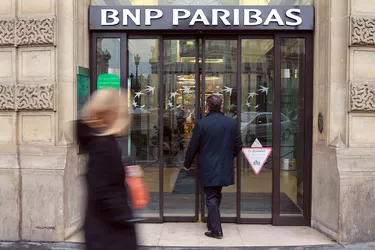
Custodian banks are charged with the formidable responsibility of keeping financial assets safe and servicing the portfolios related to those assets, whether that be settling trades or collecting the income generated. Many financial participants, such as broker/dealers and money managers, rely on custodian banks to handle their portfolio transactions. Custodian banks usually offer other services related to administering accounts. Fees vary, with many banks charging custody fees based on the value of the assets under custody. The universe of custodian banks is a small one, and only a handful of players are large enough to dominate.
Bank of New York Mellon
Video of the Day

On top of the custodian bank heap is Bank of New York Mellon, with nearly $28 trillion under custody worldwide, as of March 2014, according to custody and fund administration resource GlobalCustody.net. Trefis data providers predicts that BNY Mellon will increase its assets under custody from $26.7 trillion in 2012 to up to $34.5 trillion by 2020.
Video of the Day
JP Morgan

In the battle for global assets under custody, JP Morgan comes in second. With $21 trillion under custody as of March 2014, JP Morgan is distinguished from BNY Mellon by holding all of those assets directly, as opposed to managing some portion of assets in a sub-custodian capacity.
State Street

State Street, too, holds sway over global assets under custody, with directly managed assets similar to JP Morgan's numbers in March 2014, of almost $21 trillion. Trefis projects that State Street's assets under custody could eventually reach between $30 to $40 trillion, depending on prevailing economic conditions.
Citigroup

Citigroup's ranking as a custodian bank depends on the disposition of its assets. In global assets, it ranks in fourth place as of March 2014, housing $14.5 trillion under custody, with over $12 trillion of those assets managed on a sub-custodian basis. On the domestic front in the U.S., it ranks fifth in size among banks as of December 2013, with $5 trillion in assets under custody. For cross-border assets, Citigroup comes in second, with $9.5 trillion, as of December 2013.
BNP Paribas

BNP Paribas is also a shape-shifter among the largest custodian banks, coming in fifth among worldwide assets with over $8 trillion in assets under custody as of December 2013, but fourth among domestic assets with nearly $5.4 trillion for the same time period.